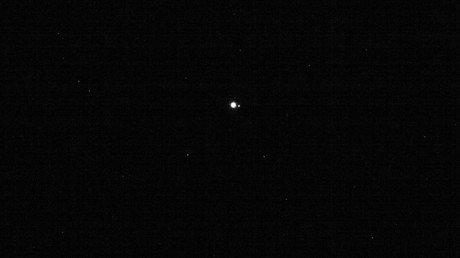Hubble discovers vast evidence of water in rare exoplanet’s atmosphere

NASA’s Hubble spacecraft has discovered signs of a large amount of water in an exoplanet some 700 light-years away. The planet is unlike others in the solar system and can provide crucial insights into the origin of other worlds.
The agency’s Hubble and Spitzer space telescopes found the “fingerprints” of water in the atmosphere of a hot, bloated, Saturn-like exoplanet known as WASP-39b. As it turned out, the planet has three times as much water as Saturn, which could provide groundbreaking insights into how and where planets form around a star, according to researchers.
While the components of WASP-39b’s atmosphere are similar in mass to that of Saturn, the planets differ in many other ways, mostly because of the vapor detected in the exoplanet’s atmosphere.
NASA says the discovery highlights the complexity of other worlds and “underscores the fact that the more astronomers learn..the more there is to learn about their origins.”
“This latest observation is a significant step toward characterizing these worlds,” NASA said.
While researchers were expecting to find water in WASP-39b’s atmosphere, the team was surprised by just how much they discovered. In fact, the exoplanet has so much water that astronomers believe it must have been formed in a different way than its neighbors.
The amount of water suggests that WASP-39b has a unique evolutionary history and likely developed far away from its star, where it was “bombarded by a lot of icy material" throughout its epic journey across its planetary system.
READ MORE: Waste of space? NASA’s $1bn mobile launch tower may work only once
"We need to look outward so we can understand our own solar system,"explained lead investigator Hannah Wakeford of the Space Telescope Science Institute in Baltimore, Maryland, and the University of Exeter in Devon, United Kingdom. "But exoplanets are showing us that planet formation is more complicated and more confusing than we thought it was. And that's fantastic!"
The combination of the Hubble and Spitzer telescopes provided the best possible analysis of WASP-39b’s atmosphere with present-day technology. "This spectrum is thus far the most beautiful example we have of what a clear exoplanet atmosphere looks like," said Wakeford.















